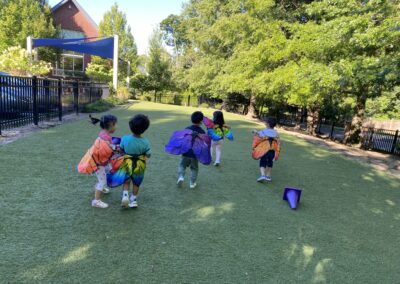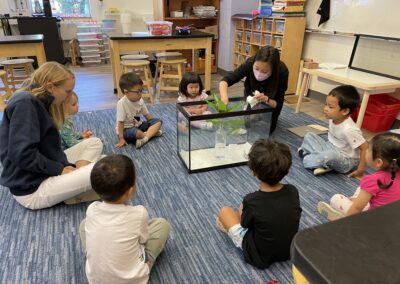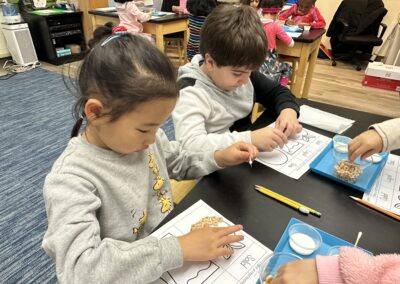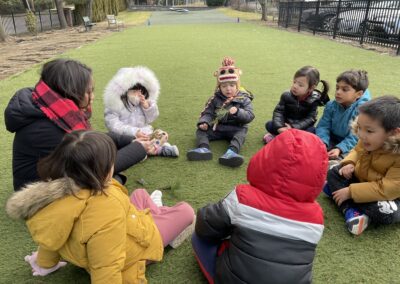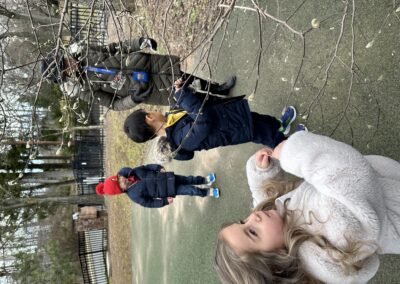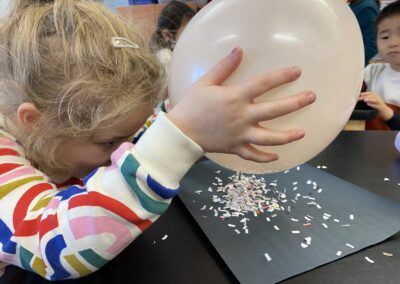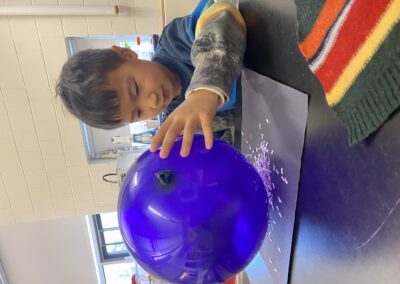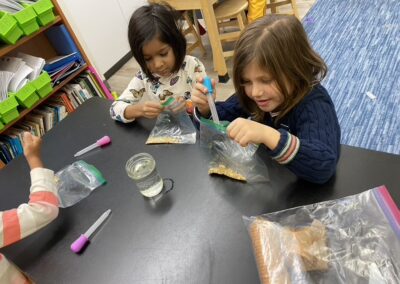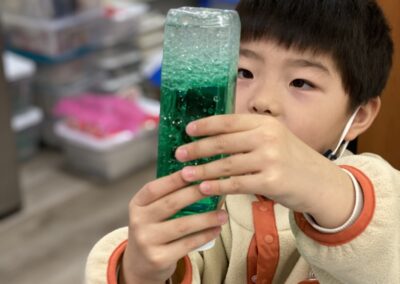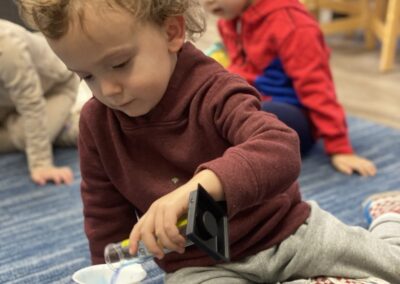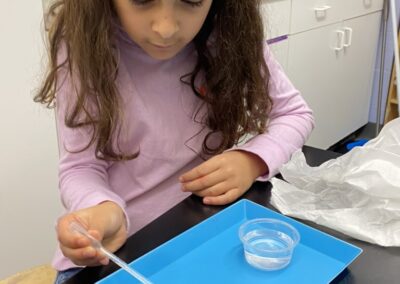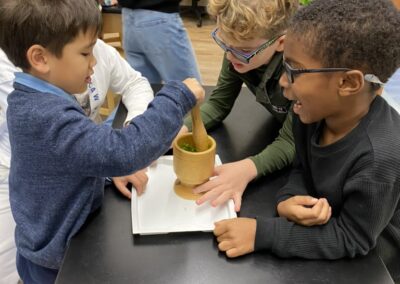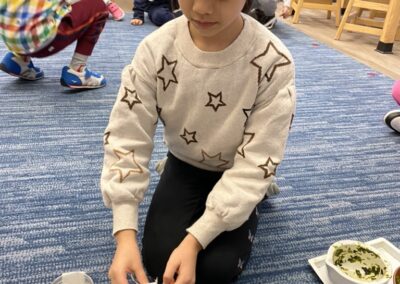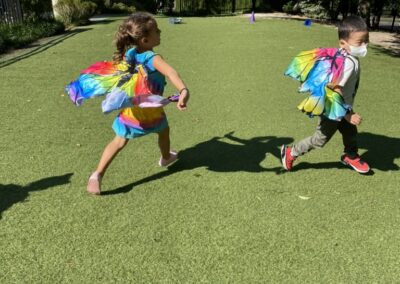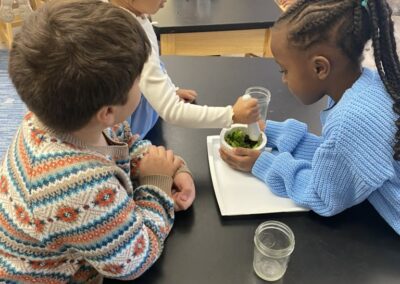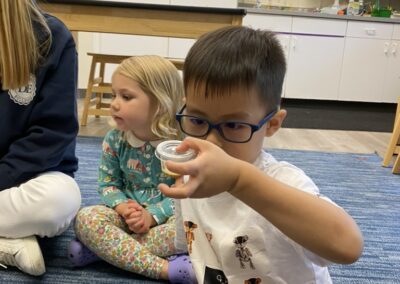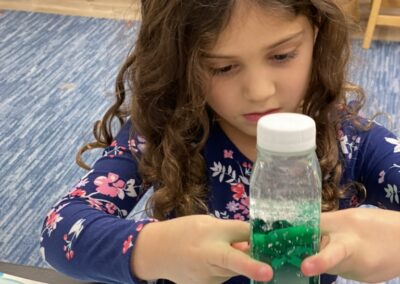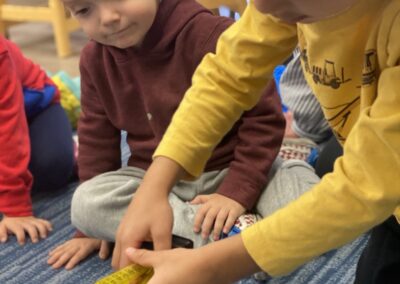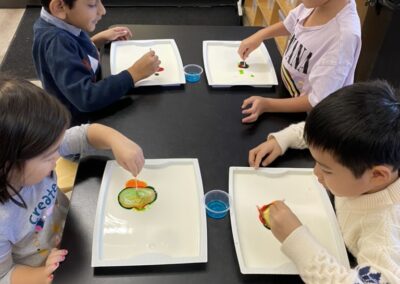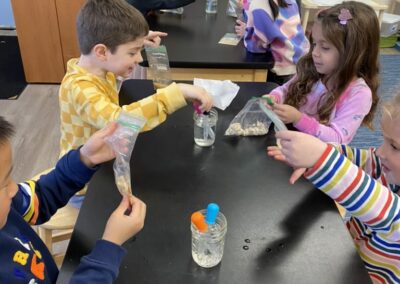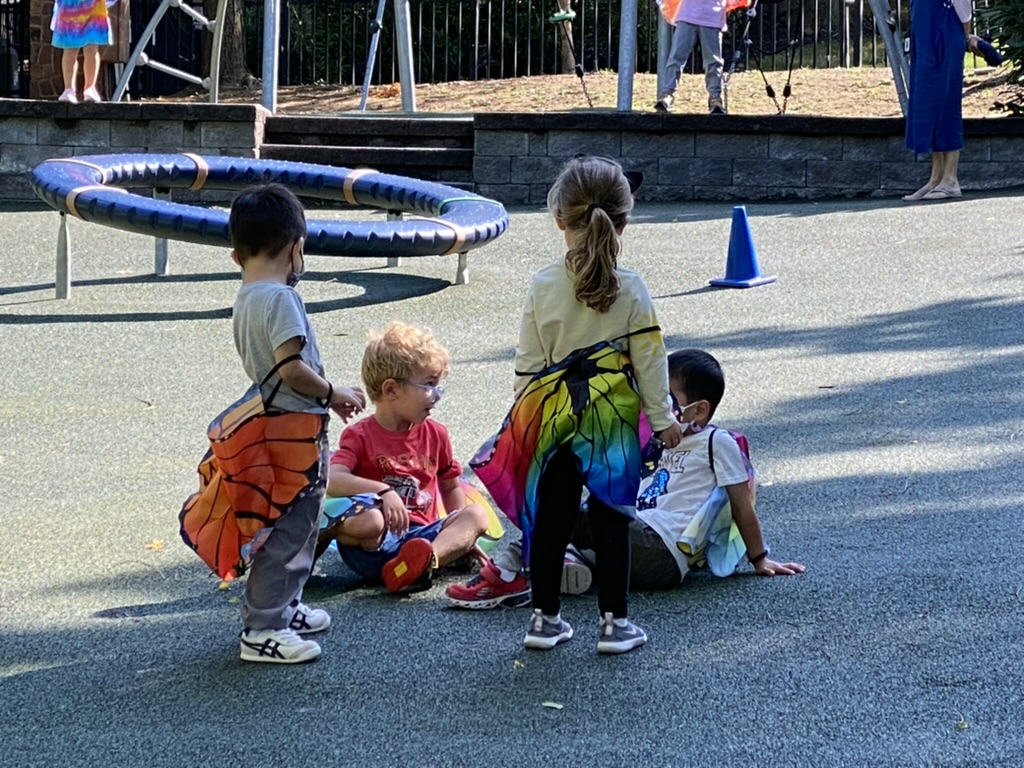
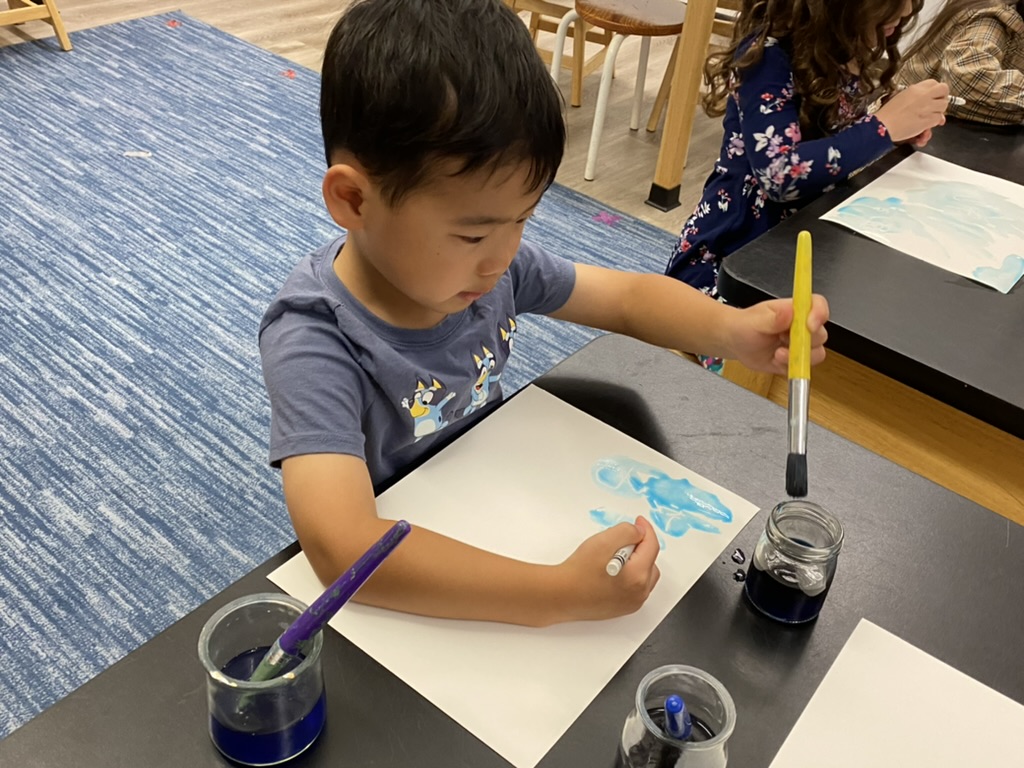
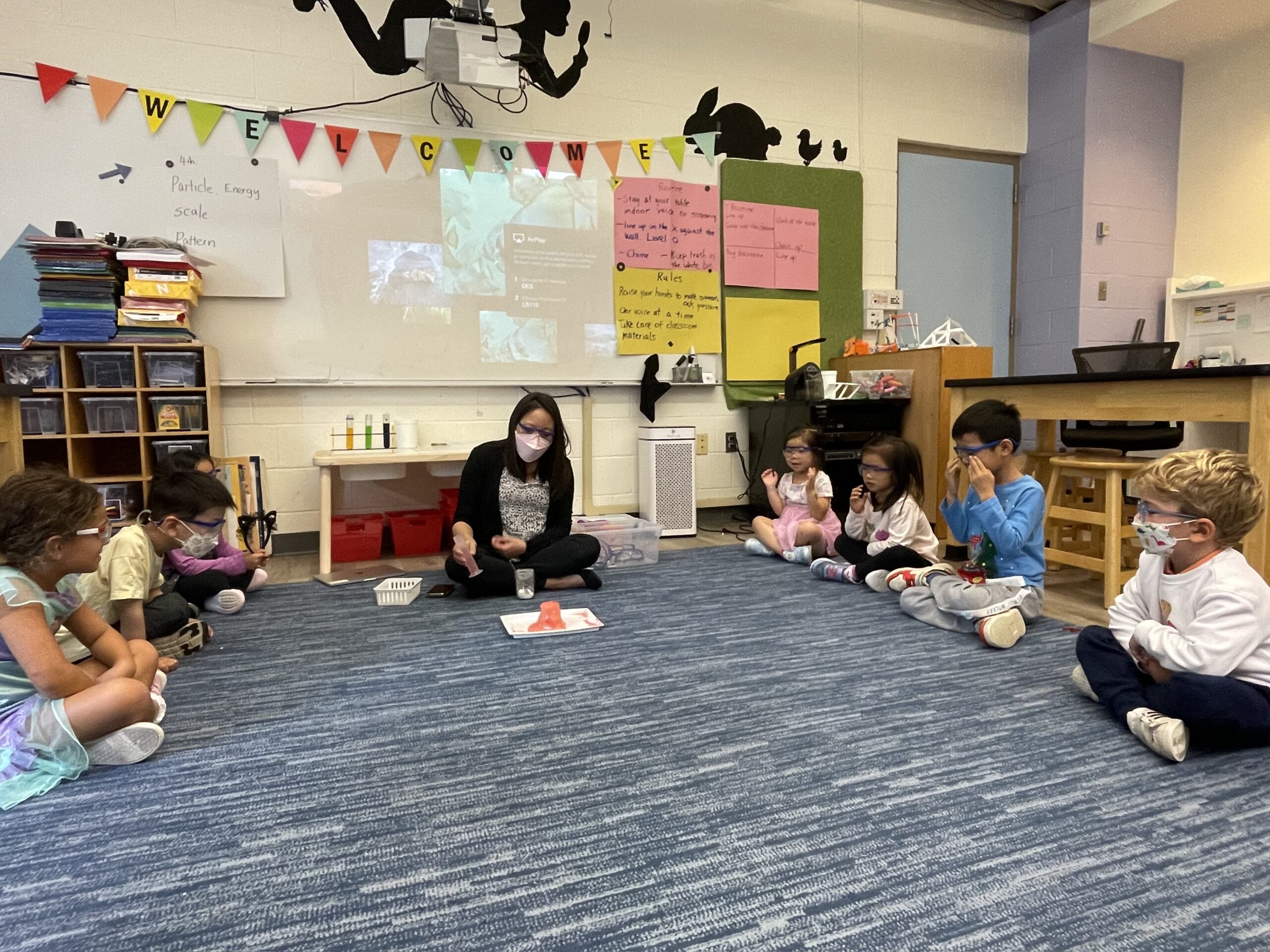
In their position on early childhood science education, the National Science Teaching Association (NSTA) “affirms that learning science and engineering practices in the early years can foster children’s curiosity and enjoyment in exploring the world around them and lay the foundation for a progression of science learning in K-12 settings and throughout their entire lives.*”
As students arrive for science, they eagerly ask questions before walking through the doors of the exploratorium. “Why do we have eye goobers? Why is that chrysalis brown and wrinkly? What happens to the beetles in the winter when the milkweed dies?” They are naturally curious about the world around them and, as blossoming researchers, they seek to discover answers to their inquiries. Even before formally teaching the scientific method, young children are hypothesizing, making predictions, and thinking critically about their wonderings. For the children in early childhood, scientific inquiry is honored, encouraged, and supported.
The students’ inquiries help to guide their learning. Listening to the children’s queries and interests influences the hands-on, sensory activities that are offered. By presenting our students with both planned and impromptu opportunities to actively engage with their environment, they are able to make connections, notice patterns, and build upon their prior knowledge. As well, they develop skills for using science tools and methods, for working collaboratively, and for organizing and communicating their ideas. Young children are capable of reflecting upon their experiences to build an understanding of scientific concepts that they will study in more depth in later years.
It is a joy to be able to witness the discoveries and connections that the young D-E scientists make each day! Please enjoy the following photos from this semester.
*Retrieved from https://www.nsta.org/nstas-official-positions/early-childhood-science-education

